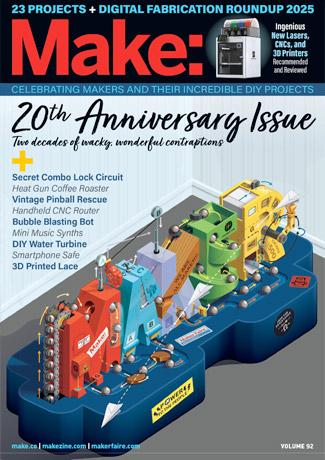

Just before the launch of Maker Faire Rome, the Arduino team made a big splash by announcing two new Linux boards. The first is Galileo, which is made in collaboration with Intel:
Intel® Galileo board is the first product in a new family of Arduino Certified boards featuring Intel architecture. The platform is easy to use for beginners and for those looking to take designs to the next level.
Overall, the Intel Galileo development board is a great tool for quickly prototyping simple interactive designs like LED light displays that respond to social media, or for tackling more complex projects from automating home appliances to building life-size robots that you control from your smartphone.
Building on the Galileo development board, Intel and the Arduino community will work closely together on future products that bring the performance, scalability and possibilities of Intel technology to this growing community of makers.
During How to reMake the World conference, Intel Corporation CEO Brian Krzanich announced a large-scale donation of 50,000 Intel® Galileo boards to be given to 1,000 universities worldwide over the next 18 months.
Intel Galileo will be available by November 29, 2013 for under $60.
The second board announced today is the Arduino TRE which is based on the new Texas Instruments AM335x Processor. It’s the first Arduino board manufactured in the United States.
Thanks to the 1-GHz Sitara AM335x processor, Arduino developers get up to 100 times more performance with the Sitara-processor-based TRE than they do on the Arduino Leonardo or Uno. This performance opens the doors to more advanced Linux-powered applications. The Sitara-processor-based Linux Arduino can run high-performance desktop applications, processing-intensive algorithms or high-speed communications.
The Arduino TRE is two Arduinos in one: the Sitara-processor-based Linux Arduino plus a full AVR-based Arduino, while leveraging the simplicity of the Arduino software experience. The integration of the AVR Arduino enables the Arduino TRE to use the existing shield ecosystem so that innovators can expand the Arduino TRE to develop a wide range of high-performance applications such as 3D printers, gateways for building automation and lighting automation, telemetry hubs that collect data from nearby sensors wirelessly, and other connected applications that require host control plus real-time operations.
In addition, the Arduino TRE is partially the result of a close collaboration between Arduino and the BeagleBoard.org foundation. These open hardware pioneers share a passion for expanding open source development and making technology accessible for artists, designers and hobbyists. The TRE design builds upon the experience of both Arduino and BeagleBoard.org, combining the benefits of both community based boards.
“By choosing TI’s Sitara AM335x processor to power the Arduino TRE, we’re enabling customers to leverage the capabilities of an exponentially faster processor running full Linux,” said Massimo Banzi, co-founder, Arduino. “Our customers now have a scalable portfolio at their fingertips, from the microcontroller-based Uno to the TRE Linux computer.”
They’re expecting to ship the Arduino TRE in Spring 2014. The Arduino team did not announce the price of the board.
ADVERTISEMENT






